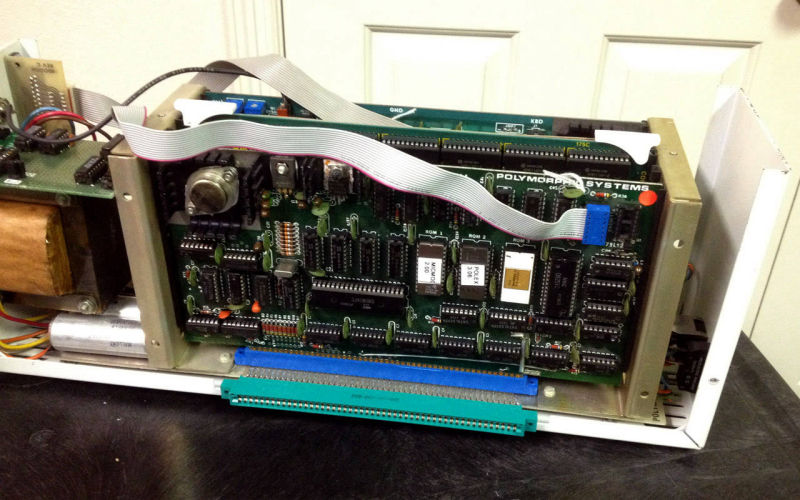The Poly-8813 was introduced in 1977, about a year after the cassette-based Poly-88. The 8813 used the same CPU, video, and RAM boards that were sold for the Poly-88, but in a much bigger chassis with a large power supply, card cage, and room for three 5.25 inch floppy drives. The 8813 was originally sold with a SSSD hard sector disk controller, three 5.25 inch drives (about 88K each), a disk operating system, programming languages, and business applications.
The introductory price was $3,250 - about $11,000 today. The operating system was a surprisingly powerful and flexible DOS called "System-88" or "Exec." The supporting macro assembler, BASIC, word processing, and other packages were as good or better than comparable products on the market at that time. System-88 had several key features not available in CP/M, but at the same time, had several shortcomings relative to CP/M. By the early 1980's, the personal computer market had adopted CP/M as a de facto standard, and as such, CP/M had by far the largest available software base. Poly owners clamored for CP/M for their machines, but as noted above (Poly-88 and CP/M), it was not easy to port CP/M to the Poly hardware. Lifeboat, one of the largest distributors of CP/M, promised CP/M for the PolyMorphic computers for about a year before giving up. Eventually, PolyMorphic themselves provided CP/M for their computers, however, this required mods to the CPU board, the video board, and installation of a new RAM board that could be swapped in and out of the lower 8K of address space under program control.Shown below are pictures of the first Poly-8813 I restored. I am lucky enough to have also found a Poly-8813 with the CP/M hardware modifications. After a good bit of restoration work, I was able to get that system up and running as well. Watch
this video to see the system boot System-88 and then CP/M. Numerous System-88 disk images, disk image transfer utilities, PROM source code, information about the CP/M hardware mods, and more are available in the
Resources section below.
For another look at PolyMorphic computers, click to see the archive of Bob Bybee's PolyMorphic website. System View
System View Rear View
Rear View Internal Side View
Internal Side View Internal Top View
Internal Top View